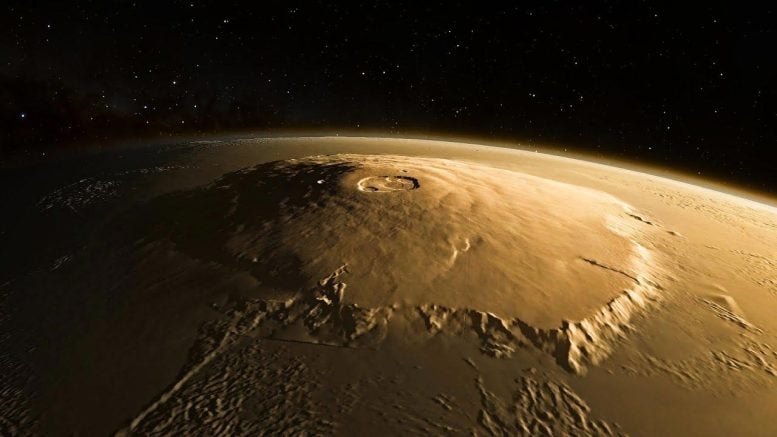
New research suggests that the colossal Olympus Mons volcano on Mars has morphological characteristics similar to many active volcanic islands on Earth, likely due to the interaction between lava and liquid water. (A computer-generated view of Olympus Mons.) Credit: Dreksler Astral / Lowell Observatory
Research reveals that the Olympus Mons and Alba Mons volcanoes on Mars exhibit features similar to Earth’s active volcanic islands, likely indicating past interaction between lava and liquid water. This supports the hypothesis that a vast ocean may have once existed in Mars’ northern lowlands. Studying these volcanic rocks could provide insights into Mars’ climatic evolution.
Imagine a volcanic island about the size of France and over 20,000 meters (65,000 feet) high. Such a landscape may once have existed on the planet Mars.
Published in the journal Earth and Planetary Science Letters on July 24, recent work led by a CNRS researcher shows that the giant Olympus Mons volcano on Mars shares morphological similarities with many active volcanic islands on Earth. Scientists believe they are the result of contact between liquid water and lava from the volcano.
Similar features on the northern flank of the Alba Mons volcano, located more than 1,500 km (900 miles) from Olympus Mons, also support the idea that a vast ocean of liquid water once occupied the Red Planet’s northern lowlands. Precise dating of these volcanic rocks could provide a considerable amount of information about the climatic evolution of Mars.
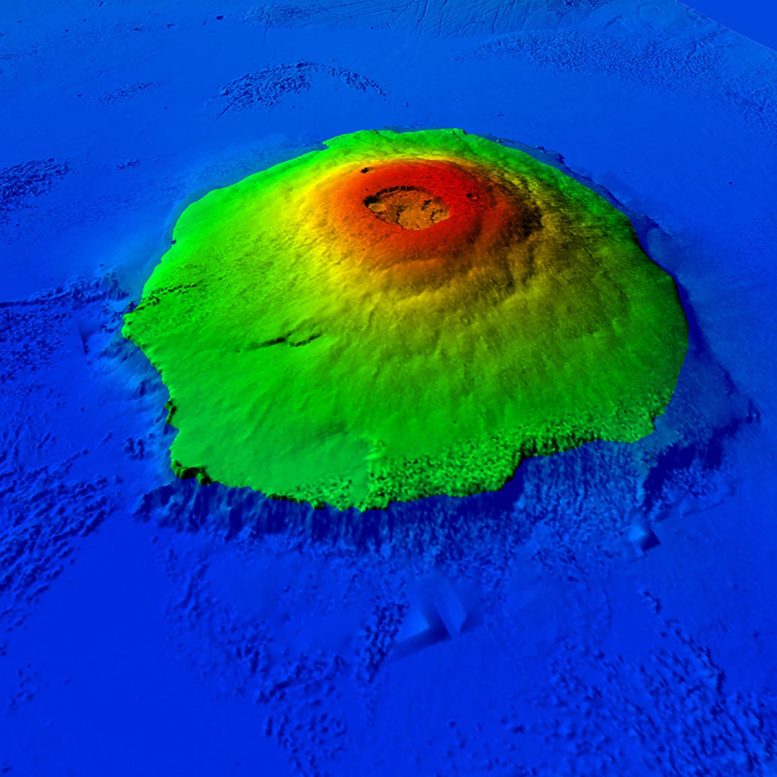
Olympus Mons: a volcanic island in the middle of a vanished Martian ocean. Credit: A.Hildenbrand/Geops/CNRS (Image produced from MOLA public data)
Olympus Mons is a large shield volcano on the planet Mars. It is the tallest volcano and the largest shield volcano in the solar system. Standing at an impressive height of about 13.6 miles (22 kilometers), Olympus Mons is nearly three times the height of Mount Everest, which is the tallest mountain on Earth. Olympus Mons is about 370 miles (600 kilometers) in diameter, which is comparable to the size of the state of Arizona in the United States.
The term “shield volcano” is used to describe a type of volcano that has shallow, broad slopes created by the eruption of low-viscosity lava that can flow a great distance before cooling and hardening. The volcano gets its name from its size and shape, which resembles a warrior’s shield.
The caldera (summit crater of the volcano) of Olympus Mons is about 50 miles (80 kilometers) wide and is made up of six overlapping pits or craters created by different volcanic events. These events occurred when magma chambers below the surface emptied out and the ground above them collapsed.
Olympus Mons is located in the Tharsis Montes region of Mars, which is home to several other large volcanoes. Its age is estimated to be about 200 million years, and evidence from various Mars missions suggests that lava flowed from the volcano in the relatively recent past, geologically speaking – about 2 million years ago.
Reference: “A giant volcanic island in an early Martian Ocean?” by A. Hildenbrand, H. Zeyen, F. Schmidt, S. Bouley, F. Costard, P.Y. Gillot, F.O. Marques, X. Quidelleur, 24 July 202, Earth and Planetary Science Letters.
DOI: 10.1016/j.epsl.2023.118302

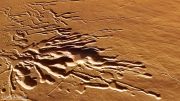
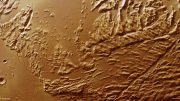
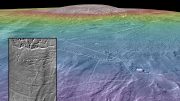
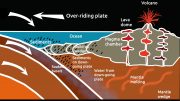
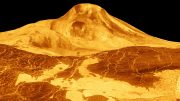
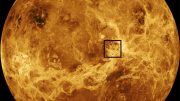
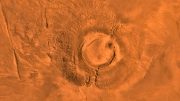
I wish scientists would say it like – the largest volcano (so far) or (that we know of). It’s a large solar system.
Yes, there could be bigger ones on Venus.
Mt.Everest isn’t the tallest mountain on earth,the Hawaiian islands with it’s numerous volcanoes are the tallest mountains on earth.If using the distance between the base and the summit then the volcanoes on Hawaii are the tallest.Mt.Everest is the highest point above sea level on the surface of the planet but the distance between it’s base and summit is less than the volcano’s on Hawaii
It’s caldera is almost the size of Yellowstone. Interesting plus the use of nuclear weapons is told by summarians. Would have stripped it’s atmosphere. All interesting.
How do you know it’s the largest in the solar system? That is a blatant overstatement. We have no frikin idea if it’s the largest in the solar system. Have we been out to explore all of the solar system? No, we haven’t! If your gonna try and be a writer, make sure you have your facts strait, and do t add, or give statements that are not true
Brady herring is correct there but there is also the volcano by japan underwater